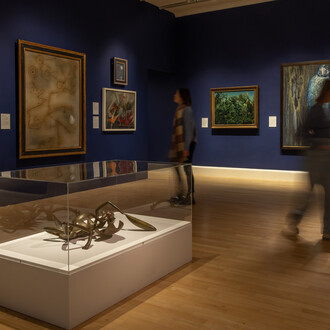The eighteenth century was a dynamic era, informed by new, ‘enlightened’ ideas about mankind and its place in the world. It ended however in violence, with revolutions in America and France.
European art in this period was strikingly diverse. As the century progressed the playful and decorative ‘Rococo’ style was replaced by Neo-classicism, a simpler and more severe approach to art inspired by classical culture.
This revival of the spirit of the ancient past was fostered by the Grand Tour, whereby wealthy young men travelled to Italy to complete their education, often commissioning portraits and other works of art. At the turn of the century, following the French Revolution, Emperor Napoleon adopted the neo-classical style for propaganda purposes.








![Hendrick Hondius, View of a Village with a Peasants' Feast ('Schelle-Belle') [NHD 28]](http://media.meer.com/attachments/4f4b3b2effe6481559d112ffe69b283ec71b9fa4/store/fill/330/330/319a6b85775c47e9638009e21bbca89b1c52d1d6b33b4aa7fc80a596b593/Hendrick-Hondius-View-of-a-Village-with-a-Peasants-Feast-Schelle-Belle-NHD-28.jpg)







